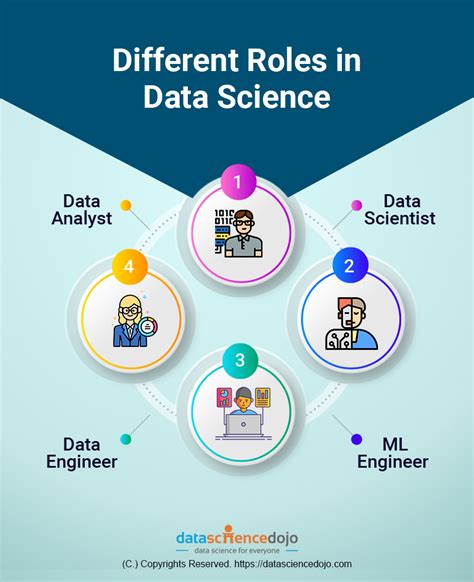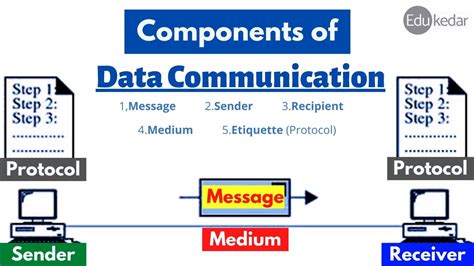Intro
Unlock the power of data-driven insights with the 5 key roles of a data scientist. From data wrangling and machine learning to storytelling and strategy, discover the essential skills and responsibilities of a data scientist. Explore the intersection of statistics, programming, and business acumen, and learn how data scientists drive business growth and informed decision-making.
In today's data-driven world, organizations are constantly seeking ways to turn their vast amounts of data into actionable insights that can inform business decisions. This is where data scientists come in – highly skilled professionals who can collect, analyze, and interpret complex data to gain valuable insights. But what exactly does a data scientist do? In this article, we'll explore the five key roles of a data scientist and how they contribute to an organization's success.

The Role of a Data Scientist: More Than Just Analysis
A data scientist is often seen as a jack-of-all-trades, with expertise in computer science, statistics, and domain-specific knowledge. But their role goes beyond just analyzing data. They are responsible for extracting insights from data, communicating those insights to stakeholders, and driving business decisions. In essence, a data scientist is a problem-solver, a communicator, and a strategic thinker all rolled into one.
Key Role 1: Data Wrangling and Preprocessing
Before any analysis can take place, data scientists must first collect, clean, and preprocess the data. This involves identifying relevant data sources, extracting the data, and transforming it into a usable format. Data wrangling and preprocessing can be a time-consuming task, but it's essential for ensuring the accuracy and reliability of the insights that follow.
Data Wrangling and Preprocessing: The Foundation of Data Science
Data wrangling and preprocessing involve several key steps, including:
- Data ingestion: collecting data from various sources, such as databases, APIs, or files
- Data cleaning: removing duplicates, handling missing values, and correcting errors
- Data transformation: converting data into a suitable format for analysis
- Data storage: storing the preprocessed data in a database or data warehouse

Key Role 2: Data Analysis and Modeling
Once the data is preprocessed, data scientists can begin analyzing and modeling it. This involves using statistical and machine learning techniques to identify patterns, trends, and correlations within the data. Data analysis and modeling can help organizations identify areas of opportunity, optimize business processes, and predict future outcomes.
Data Analysis and Modeling: Uncovering Insights
Data analysis and modeling involve several key steps, including:
- Exploratory data analysis: using statistical and visualization techniques to understand the data
- Model development: building statistical and machine learning models to identify patterns and trends
- Model evaluation: testing and refining the models to ensure accuracy and reliability
- Model deployment: deploying the models in production environments to drive business decisions

Key Role 3: Communication and Storytelling
Data scientists must be able to communicate complex insights to non-technical stakeholders, including business leaders, product managers, and customers. This involves using storytelling techniques to present findings in a clear and compelling way, using visualizations and narratives to bring the data to life.
Communication and Storytelling: The Art of Data Science
Effective communication and storytelling involve several key steps, including:
- Identifying key insights: distilling complex findings into clear and concise messages
- Creating visualizations: using charts, graphs, and other visualizations to illustrate key points
- Developing narratives: crafting compelling stories that bring the data to life
- Presenting findings: presenting the insights to stakeholders, using clear and concise language

Key Role 4: Business Acumen and Strategic Thinking
Data scientists must have a deep understanding of the business and its goals, as well as the ability to think strategically about how data can drive business decisions. This involves identifying areas of opportunity, developing business cases, and working with stakeholders to drive change.
Business Acumen and Strategic Thinking: The Business Side of Data Science
Business acumen and strategic thinking involve several key steps, including:
- Understanding business goals: identifying key business objectives and metrics
- Developing business cases: building cases for how data can drive business decisions
- Identifying areas of opportunity: using data to identify areas for improvement
- Working with stakeholders: collaborating with stakeholders to drive change

Key Role 5: Staying Up-to-Date with Emerging Trends and Technologies
Finally, data scientists must stay up-to-date with emerging trends and technologies, including new tools, techniques, and methodologies. This involves ongoing learning and professional development, as well as staying current with industry trends and breakthroughs.
Staying Up-to-Date: The Ever-Changing Landscape of Data Science
Staying up-to-date involves several key steps, including:
- Following industry leaders: staying current with industry trends and breakthroughs
- Attending conferences: attending conferences and meetups to learn from others
- Reading industry publications: staying current with industry publications and research
- Participating in online communities: participating in online forums and communities to stay connected with others

Conclusion
In conclusion, the role of a data scientist is complex and multifaceted, involving data wrangling and preprocessing, data analysis and modeling, communication and storytelling, business acumen and strategic thinking, and staying up-to-date with emerging trends and technologies. By understanding these key roles, organizations can better leverage the power of data science to drive business decisions and stay ahead of the competition.
What do you think? Share your thoughts on the role of a data scientist in the comments below!
What is the primary role of a data scientist?
+The primary role of a data scientist is to extract insights from data and drive business decisions.
What skills does a data scientist need to possess?
+A data scientist needs to possess skills in computer science, statistics, and domain-specific knowledge, as well as strong communication and business acumen skills.
How does a data scientist stay up-to-date with emerging trends and technologies?
+A data scientist stays up-to-date by following industry leaders, attending conferences, reading industry publications, and participating in online communities.
